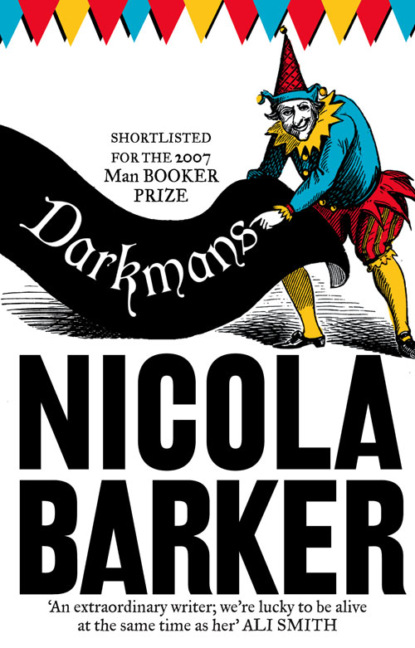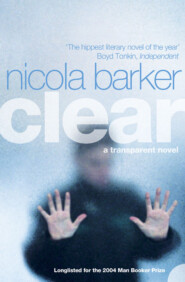По всем вопросам обращайтесь на: info@litportal.ru
(©) 2003-2024.
✖
Darkmans
Настройки чтения
Размер шрифта
Высота строк
Поля
Yet in recent years Beede had been in the unenviable position of finding his own home increasingly unrecognisable to him (Change; My God! He woke up, deep in the night, and could no longer locate himself. Even the blankets felt different – the quality of light through his window – the air). Worse still, Beede currently considered himself to be one of the few individuals in this now flourishing ‘Borough of Opportunity’ (current population c. 102,000) to have been washed up and spat out by the recent boom.
Prior to his time (why not call it a Life Sentence?) in the hospital laundry, Beede had worked – initially at ground level (exploiting his naval training), then later, in a much loftier capacity – for Sealink (the ferry people), and had subsequently become a significant figure at Mid-Kent Water plc; suppliers of over 36 million gallons of H2O, daily, to an area of almost 800 square miles.
If you wanted to get specific about it (and Beede always got specific) his life and his career had been irreparably blighted by the arrival of the Channel Tunnel; more specifically, by the eleventh-hour re-routing of the new Folkestone Terminal’s access road from the north to the south of the tiny, nondescript Kentish village of Newington (where Beede’s maternal grandmother had once lived) in 1986.
Rather surprisingly, the Chunnel hadn’t initially been Beede’s political bête noire. He’d always been studiously phlegmatic about its imminence. The prospect of its arrival had informed (and seasoned) his own childhood in much the same way that it had informed both his parents’ and his grandparents’ before them (as early as the brief Peace of Amiens, Napoleon was approached by Albert Mathieu Favier – a mining engineer from Northern France – who planned to dig out two paved and vaulted passages between Folkestone and Cap Gris-Nez; the first, a road tunnel, lit by oil lamps and ventilated by iron chimneys, the second, to run underneath it, for drainage. This was way back in 1802. The subsequent story of the tunnel had been a long and emotionally exhausting tale spanning two centuries and several generations; an epic narrative with countless dead-ends, low-points, disasters and casualties. Daniel Beede – and he was more than happy to admit as much – was merely one of these).
Politically, ideologically, Beede had generally been of a moderate bent, but at heart he was still basically progressive. And he’d always believed in the philosophy of ‘a little and often’, which – by and large – had worked well for him.
Yes, of course – on the environmental brief – he’d been passingly concerned about the loss of the rare Spider Orchid (the site of the proposed Folkestone Terminal was one of the few places it flourished, nationally), and not forgetting the currently endangered great crested newt, which Beede remembered catching as a boy in local cuts and streams with his simple but robust combination of a small mesh net and marmalade-jar.
And yes, he was well aware – more, perhaps, than anybody – of what the true (and potentially devastating) implications of a Channel link would be on the Kentish shipping industry (a loss of around 20,000 jobs was, at that time, the popular estimate).
And yes, yes, he had even harboured serious fears – and quite correctly, as it later transpired – that many of the employment opportunities on the project would pass over local people (at that point Ashford had one of the highest unemployment rates in the country) to benefit non-indigens, outside investors and foreign businesses.
It went without saying that the Chunnel (now a source of such unalloyed national complacency and pride) had caused huge headaches – and terrible heartache – in East Kent, but Beede’s greatest betrayal had been on a much smaller, more informal, more abstract level.
Beede’s maternal grandmother’s home had been a neat, quaint, unpretentious little cottage (pottery sink, tile floors, outside lavvy) in the middle of a symmetrical facade of five known as Church Cottages. They were located at the conjunction of the old School Road and Newington’s main, central thoroughfare The Street (no shop, no pub, twenty-five houses, at a push).
Much as their name implies, Church Cottages enjoyed a close physical proximity with Newington’s twelfth-century church and its similarly ancient – and much-feted – graveyard Yew.
Beede’s paternal grandparents (to whom he was slightly less close) also lived locally – several hundred yards north up the aforementioned Street – in the neighbouring village of Peene. Just so long as any inhabitant of either of these two tiny Kentish villages could remember, they had considered themselves a single community.
When the developer’s plans for the new Folkestone Terminal were initially proposed, however, it quickly became apparent that all this was soon about to change. Several farms and properties (not least, the many charming, if ramshackle homes in the idiosyncratic Kentish hamlet of Danton Pinch) were to be sacrificed to the terminal approach and concourse, not to mention over 500 acres of prime farmland and woodland, as well as all remaining evidence of the old Elham Valley Railway (built in 1884, disused since 1947). But worse still, the access road from the terminal to the M20 was due to cut a wide path straight between Newington and Peene, thereby cruelly separating them, forever.
Beede’s maternal grandmother and paternal grandparents were now long gone. Beede’s mother had died of breast cancer in 1982. His part-senile father now lived with Beede’s older brother on the south coast, just outside Hastings.
Beede’s parents had moved to the heart of Ashford (14 miles away) two years before he was even conceived, but Beede maintained a lively interest in their old stamping ground; still visited it regularly, had many contacts among the local Rotary and Cricket Clubs (the cricket grounds were yet another Chunnel casualty), friends and relatives in both of the affected villages, and a strong sense – however fallacious – that the union of these two places (like the union of his two parents) was a critical – almost a physical – part of his own identity.
They could not be divided.
It was early in the spring of 1984 when he first became aware of Eurotunnel’s plans. Beede was a well-seasoned campaigner and local prime mover. His involvement was significant. His opinions mattered. And he was by no means the only dynamic party with a keen interest in this affair. There were countless others who felt equally strongly, not least (it soon transpired) Shepway’s District Council. On closer inspection of the proposed scheme, the Council had become alarmed by the idea that this divisive ‘Northern Access Route’ might actively discourage disembarking Chunnel traffic from travelling to Dover, Folkestone or Hythe (Shepway’s business heartland) by feeding it straight on to the M20 (and subsequently straight on to London). The ramifications of this decision were perceived as being potentially catastrophic for local businesses and the tourist trade.
A complaint was duly lodged. The relevant government committee (where the buck ultimately stopped) weighed up the various options on offer and then quietly turned a blind eye to them. But the fight was by no means over. In response, the Council, Beede, and many residents of Newington and Peene got together and threatened a concerted policy of non-cooperation with Eurotunnel if a newly posited scheme known as ‘The Shepway Alternative’ (a scheme still very much in its infancy) wasn’t to be considered as a serious contender.
In the face of such widespread opposition the committee reassessed the facts and – in a glorious blaze of publicity – backed down. The decision was overturned, and the new Southern Access Route became a reality.
This small but hard-won victory might’ve been an end to the Newington story. But it wasn’t. Because now (it suddenly transpired) there were to be other casualties, directly as a consequence of this hard-won Alternative. And they would be rather more severe and destructive than had been initially apprehended.
To keep their villages unified, Newington and Peene had sacrificed a clutch of beautiful, ancient properties (hitherto unaffected by the terminal scheme) which stood directly in the path of the newly proposed Southern Link with the A20 and the terminal. One of these was the grand Victorian vicarage, known as The Grange, with its adjacent Coach House (now an independent dwelling). Another, the magnificent, mid-sixteenth-century farmhouse known as Stone Farm. Yet another, the historic water mill (now non-functioning, but recently renovated and lovingly inhabited, with its own stable block) known as Mill House.
Beede wasn’t naive. He knew only too well how the end of one drama could sometimes feed directly into the start of another. And so it was with the advent of what soon became known as ‘The Newington Hit List’.
Oh the uproar! The sense of local betrayal! The media posturing and ranting! The archaeological chaos engendered by this eleventh-hour re-routing! And Beede (who hadn’t, quite frankly, really considered all of these lesser implications – Mid-Kent Water plc didn’t run itself, after all) found himself involved (didn’t he owe the condemned properties that much, at least?) in a crazy miasma of high-level negotiations, conservation plans, archaeological investigations and restoration schemes, in a last-ditch attempt to rectify the environmental devastation which (let’s face it) he himself had partially engendered.
Eurotunnel had promised to dismantle and re-erect any property (or part of a property) that was considered to be of real historical significance. The Old Grange and its Coach House were not ‘historical’ enough for inclusion in this scheme and were duly bulldozered. Thankfully some of the other properties did meet Eurotunnel’s high specifications. Beede’s particular involvement was with Mill House, which – it soon transpired – had been mentioned in the Domesday Book and had a precious, eighteenth-century timber frame.
The time for talking was over. Beede put his money where his mouth was. He shut up and pulled on his overalls. And it was hard graft: dirty, heavy, time-consuming work (every tile numbered and categorised, every brick, every beam), but this didn’t weaken Beede’s resolve (Beede’s resolve was legendary. He gave definition to the phrase ‘a stickler’).
Beede was committed. And he was not a quitter. Early mornings, evenings, weekends, he toiled tirelessly alongside a group of other volunteers (many of them from Canterbury’s Archaeological Trust) slowly, painstakingly, stripping away the mill’s modern exterior, and (like a deathly coven of master pathologists), uncovering its ancient skeleton below.
It wasn’t all plain sailing. At some point (and who could remember when, exactly?) it became distressingly apparent that recent ‘improvements’ to the newer parts of Mill House had seriously endangered the older structure’s integrity –
Now hang on –
Just…just back up a second –
What are you saying here, exactly?
The worst-case scenario? That the old mill might never be able to function independently in its eighteenth-century guise; like a conjoined twin, it might only really be able to exist as a small part of its former whole.
But the life support on the newer part had already been switched off (they’d turned it off themselves, hadn’t they? And with such care, such tenderness), so gradually – as the weeks passed, the months – the team found themselves in the unenviable position of standing helplessly by and watching – with a mounting sense of desolation – as the older part’s heartbeat grew steadily weaker and weaker. Until one day, finally, it just stopped.
They had all worked so hard, and with such pride and enthusiasm. But for what? An exhausted Beede staggered back from the dirt and the rubble (a little later than the others, perhaps; his legendary resolve still inappropriately firm), shaking his head, barely comprehending, wiping a red-dust-engrained hand across a moist, over-exerted face. Marking himself. But there was no point in his war-painting. He was alone. The fight was over. It was lost.
And the worst part? He now knew the internal mechanisms of that old mill as well as he knew the undulations of his own ribcage. He had crushed his face into its dirty crevices. He had filled his nails with its sawdust. He had pushed his ear up against the past and had sensed the ancient breath held within it. He had gripped the liver of history and had felt it squelching in his hand –
Expanding –
Struggling –
So what now? What now? What to tell the others? How to make sense of it all? How to rationalise? Worse still, how to face the hordes of encroaching construction workers in their bright yellow TML uniforms, with their big schemes and tons of concrete, with their impatient cranes and their diggers?
Beede had given plenty in his forty-odd years. But now (he pinched himself. Shit. He felt nothing) he had given too much. He had found his limit. He had reached it and he had over-stepped it. He was engulfed by disappointment. Slam-dunked by it. He could hardly breathe, he felt it so strongly. His whole body ached with the pain of it. He was so stressed – felt so invested in his thwarted physicality – that he actually thought he might be developing some kind of fatal disease. Pieces of him stopped functioning. He was broken.
And then, just when things seemed like they couldn’t get any worse –
Oh God!
The day the bulldozers came…
(He’d skipped work. They’d tried to keep him off-site. There was an ugly scuffle. But he saw it! He stood and watched – three men struggling to restrain him – he stood and he watched – jaw slack, mouth wide, gasping – as History was unceremoniously gutted and then steam-rollered. He saw History die –
NO!
You’re killing History!
STOP!)
– just when things seemed like they were hitting rock bottom (‘You need a holiday. A good rest. You’re absolutely exhausted – dangerously exhausted; mentally, physically…’) things took one further, inexorable, downward spiral.
The salvageable parts of the mill had been taken into storage by Eurotunnel. One of the most valuable parts being its ancient Kent Peg Tiles –
Ah yes
Those beautiful tiles…
Then one day they simply disappeared.











